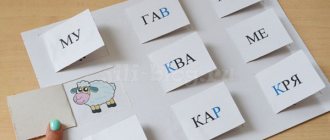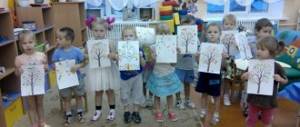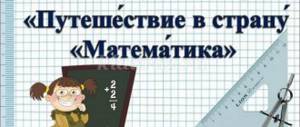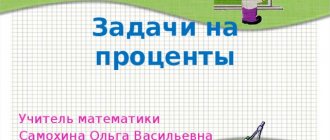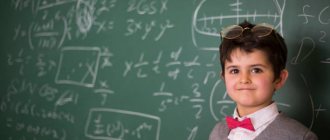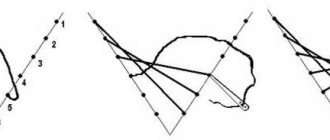work program of the “Creative Workshop” circle
educational and cognitive interest in arts and crafts, as one of the types of fine arts;
skills of independent work and group work when performing practical creative work;
ability to self-assess based on the criterion of success;
the foundations of socially valuable, personal and moral qualities: hard work, organization, conscientious attitude to work, initiative, curiosity, the need to help others, respect for other people’s work and the results of work.
sustainable cognitive interest in creative activity;
aesthetic preferences, orientation towards art as a significant sphere of human life;
the opportunity to realize creative potential in one’s own artistic and creative activity, to realize self-realization and self-determination of the individual on an aesthetic level;
emotional and value attitude to art and to life, to be aware of the system of universal human values.
In the sphere of regulatory universal educational activities, children will learn:
choose art materials, means of artistic expression to create creative works.
plan your actions;
carry out final and step-by-step control in your creative activities;
adequately perceive the assessment of their work and perform self-assessment;
work with paper, fabric, threads in grades 1-4 and acrylic contours, beads, paper and fabric in grades 5-8, acquiring the skills of creating panels;
make necessary adjustments to the activity after its completion based on the assessment and nature of the errors made.
select and build the optimal technological sequence for the implementation of your own or proposed plan.
In the field of cognitive universal educational activities, students will learn:
acquire and implement practical skills and abilities in artistic creativity;
master the features of artistic and expressive means, materials and techniques used in working with paper, fabric, acrylic contours and beads;
develop artistic taste and perceive the diversity of types and genres of art;
artistic-figurative, aesthetic, abstract type of thinking,
formation of a holistic picture of the world;
develop fantasy, imagination, artistic intuition, memory;
develop critical thinking, in the ability to argue one’s point of view in relation to various works of fine arts and crafts.
create and transform diagrams and models to solve creative problems;
understand the cultural and historical value of traditions and respect them;
Club program “Country of Masters”
Explanatory note
The work program of the “Country of Masters” circle was developed for classes with students in grades 1-4 in the afternoon in accordance with the new requirements of the Federal State Educational Standard for primary general education of the second generation, based on the “Artistic Creativity” program by T.N. Prosnyakova. and the author’s program of teacher S. A. Martyanova.
In the process of developing the program, the main guideline was the goal of harmonious unity of personal, cognitive, communicative and social development of students, nurturing in them an interest in actively learning the history of material culture and family traditions of their own and other peoples, and a respectful attitude to work.
This work will present children with a broad picture of the world of applied creativity and will help them master a variety of technologies in accordance with individual preferences.
Practical artistic activities in this program solve not only the problems of artistic education, but also larger ones - they develop the intellectual and creative potential of the child. Mastering a variety of technological techniques when working with a variety of materials in conditions of space for free creativity helps children to learn and develop their own abilities and capabilities, creates conditions for the development of initiative, ingenuity, and flexibility of thinking.
An important area in the content of the program is the spiritual, moral and environmental education of primary schoolchildren. At the level of subject education, conditions are created for education:
- patriotism: through active knowledge of the history of material culture and traditions of one’s own and other peoples;
- diligence, creative attitude to learning, work, life;
- value attitude towards beauty, the formation of ideas about aesthetic values;
- value attitude towards nature and the environment;
- value-based attitude to health (mastering techniques for working safely with tools, children understanding the need to use environmentally friendly materials, organizing healthy, creative leisure).
Along with the implementation of the concept of spiritual and moral education, the tasks of instilling technological knowledge, work skills and abilities in primary schoolchildren, the program also highlights other priority areas, among which:
- integration of subject areas in the formation of a holistic picture of the world and the development of universal educational activities;
- formation of information literacy of a modern schoolchild;
- development of communicative competence;
- developing the ability to plan, control and evaluate educational activities in accordance with the task and the conditions for its implementation;
- mastering the logical actions of comparison, analysis, synthesis, generalization, classification according to generic characteristics, establishing analogies and cause-and-effect relationships, constructing reasoning, referring to known concepts.
Distinctive features of the program
Basic theoretical ideas, key concepts
System-activity and personal approaches to primary education involve the activation of the cognitive activity of each student, taking into account his age and individual characteristics. The disclosure of the personal potential of a junior schoolchild is realized through the individualization of educational tasks. The student always has a choice in making a decision based on its degree of complexity. He can replace the proposed materials and tools with others with similar properties and qualities.
Manual labor, appliqué and drawing classes allow children with those intellectual characteristics that are less in demand in other academic subjects to express themselves. The “Country of Masters” club program should help stimulate the development of students by training finger movements, develop the cognitive needs and abilities of each student, and create conditions for the social and cultural self-expression of the child’s personality.
Insufficient development of spatial perception and visual-motor coordination is the cause of difficulties in children's learning (especially in the first grade).
Scientists have found that active physical actions with fingers have a beneficial effect on the entire body. Approximately a third of the brain centers responsible for human development are directly connected to the hands. By developing motor skills, we create the prerequisites for the development of many mental processes. Scientists and teachers who have studied the activity of the brain and the psyche of children note the great stimulating influence of hand functions. No object will provide such a variety of movements with the fingers of the hand as manual labor. In classes of subject-specific practical activities, finely coordinated movements are developed: accuracy, dexterity, speed. This occurs most intensively in the period from 6 to 10 years. Therefore, classes in the “Country of Masters” circle provide an opportunity for the development of pupils’ visual and spatial perception, creative imagination, different types of thinking, intellectual activity, speech, will, and feelings.
Stages of implementation, their rationale and relationship
The club program involves the use of traditional and non-traditional (hand drawing, using threads, ink blot method, blowing method, splashing method, plots using cereals, appliqués from shells, foil, cardboard, modeling from salt dough) techniques. The work plan includes the following types of activities: working with natural materials, drawing, appliqué, collage, modeling, thread weaving.
The forms of conducting classes are different. There are both theoretical (teacher's story, teacher's demonstration of the method of action, display of video materials, conversation with children, children's stories) and practical classes, holding student work competitions, preparing and holding exhibitions of children's works, presenting finished works to parents as gifts.
Features of the age group of primary school students:
age of children and their psychological characteristics
Children 7-10 years old have their own psychological characteristics. At this age, the most significant motives are:
- “needs for external impressions”, which are realized with the participation of an adult, his support and approval, which contributes to the creation of a climate of emotional well-being;
— need, persistent desire to become a schoolchild: cognitive need, expressed in the desire to acquire new knowledge;
- the need for communication, which takes the form of a desire to perform important socially significant activities that are important not only for himself, but also for the adults around him.
Leading activities:
- a game in its most developed form: subject-based, plot-role-playing, dramatization. Role-playing play acts as an activity in which the child is oriented in the most general, in the most basic spheres of human activity;
- educational activity as a leading one in the mental development of children of primary school age, because through it, the child’s system of relationships with surrounding adults is worked out.
Planned results
students' mastery of the "Country of Masters" club program
Predicted result:
The movements of the pupils’ hands are coordinated;
— creative imagination is developed among students;
— interest in creative activity has been formed;
— a developed culture of communication between students, hard work, perseverance, and patience.
Personal universal learning activities
The student will have the following:
- interest in new types of applied creativity, new ways of self-expression;
- cognitive interest in new ways of researching technologies and materials;
- adequate understanding of the reasons for the success/failure of creative activity.
The student will have the opportunity to form:
- internal position at the level of understanding the need for creative activity as one of the means of self-expression in social life;
- pronounced cognitive motivation;
- sustainable interest in new ways of knowing.
Regulatory universal learning activities
The student will learn:
- plan your actions;
- carry out final and step-by-step control;
- adequately perceive the teacher’s assessment;
- distinguish between the method and the result of an action.
The student will have the opportunity to learn:
- show cognitive initiative;
- independently find solutions to a creative problem.
Communicative universal learning activities
Students will be able to:
- allow for the existence of different points of view and different options for completing the assigned creative task;
- take into account different opinions, strive for coordination when performing collective work;
- formulate your own opinion and position;
- negotiate, come to a common decision;
- maintain correctness in statements;
- ask substantive questions;
- control your partner's actions.
The student will have the opportunity to learn:
- take into account different opinions and justify your position;
- master monologue and dialogic forms of speech;
- exercise mutual control and provide cooperation partners with the necessary mutual assistance.
Cognitive universal learning activities
The student will learn:
- search for the necessary information to complete an artistic task using educational and additional literature in the open information space, incl. controlled Internet space;
- express yourself orally and in writing;
- analyze objects, highlight the main thing;
- carry out synthesis (a whole from parts);
- compare and classify according to different criteria;
- establish cause-and-effect relationships;
- build reasoning about an object.
The student will have the opportunity to learn:
- carry out an extensive search for information in accordance with the research task using library resources and the Internet;
- consciously and voluntarily construct messages in oral and written form;
- the use of methods and techniques of artistic and creative activity in the main educational process and everyday life.
As a result of classes according to the proposed program, students will have the opportunity to:
- develop imaginative thinking, imagination, intelligence, fantasy, technical thinking, creative abilities;
- expand knowledge and understanding of traditional and modern materials for applied creativity;
- get acquainted with new technological methods for processing various materials;
- use previously learned techniques in new combinations and combinations;
- get acquainted with new materials processing tools or new functions of already known tools;
- improve teamwork skills;
- provide all possible assistance in the design and decoration of a classroom, school, or home;
- achieve the optimal for each level of development;
- develop skills in working with information.
COURSE STRUCTURE
| № lesson | Course content | Number of hours | List of universal actions for students |
| 1 |
Introductory lesson. Excursion “Collecting natural materials” | 15 hours 1 | To develop an interest in artistic and creative activities. Consolidating and improving techniques for working with glue and scissors, consciously following labor safety rules. Development of the eye and coordination of movements. Agree on the rules of communication and behavior, cooperate in jointly solving a problem, performing different roles in the group. Practical mastery of the basics of fine art by students. |
| 2 | Application made from natural materials on cardboard. Product "Bunny" | 1 | Accept the learning task and follow the teacher's instructions. Plan your actions with the teacher’s instructions and the intention of the artistic work. Listen and understand others, act taking into account the position of the other and be able to coordinate your actions, establish and maintain the necessary contacts with other people. Do work with peers. |
| 3 | Application made from natural materials on cardboard. Product “On the seashore” | 1 | |
| 4 | Stamping (imprinting a design with leaves). Butterfly. Vase with Flowers. | 1 | Rational use of educational and additional information for the design and creation of art objects. Formulate your own opinion. Do work with peers. Perceive and take into account the moods of other people, their emotions from perception works of art. Accept the learning task and follow the teacher's instructions. |
| 5 | Application of geometric shapes. Product "Boat" | 1 | Find out how to solve a performance problem. Read a simple schematic diagram. Distinguish between conventions. Listen and understand others, act taking into account the position of the other and be able to coordinate your actions, establish and maintain the necessary contacts with other people. Evaluate learning activities in accordance with the assigned task in a specific subject activity. Awareness of responsibility for the quality of work results. |
| 6 | Application of geometric shapes. Product "Dog" | 1 | Accept the learning task and follow the teacher's instructions. Develop interest in artistic and creative activities. The ability to plan your actions with the teacher’s instructions and the intention of the artistic work. Expand your understanding of art. Correlate the schematic image with the content of the tasks. Show initiative by participating in the creation of collective artwork. perceive and take into account the moods of other people, their emotions from the perception of works of art. Negotiate, come to a common decision. formulate your own opinion. Do work with peers. |
| 7 | Drawing using threads and circles. | 1 | |
| 8-9 | Button applique. | 2 | Determine the purpose of the activity in the lesson. Evaluate learning activities in accordance with the assigned task in a specific subject activity. Expand your understanding of art. Find out how to solve a performance problem. Read a simple schematic diagram. Distinguish between conventions. Correlate the schematic image with the content of the tasks. |
| 10-11 | Application from napkins. Products “Flower”, “Owl” | 2 | |
| 12-13 | Application on disks | 2 | Practical mastery of the basics of fine art by students. Rational use of educational and additional information for the design and creation of art objects. Construct a speech statement in accordance with the assigned tasks, be able to analyze works of art. Awareness of responsibility for the quality of work results; to navigate the ways of solving the performing task. |
| 14-15 | Volume application. | 2 | Determine the purpose of the activity in the lesson. Formation of skills to establish the relationship of knowledge in different academic subjects to solve applied educational problems. Application of general scientific knowledge on subjects of the aesthetic cycle in the process of manufacturing objects of activity. Initial awareness of the role of beauty in a person’s life. Expression of your feelings and moods in your own creativity. Evaluate learning activities in accordance with the assigned task in a specific subject activity. |
| 16-17 |
Drawing with plasticine. | -10 hours 2 | Mastering the methods of educational research and design activities, solving creative problems, modeling, design. Rational use of educational and additional information for the design and creation of art objects. |
| 18-19 | Reverse mosaic on a transparent basis. | 2 | Determine the purpose of the activity in the lesson. The ability to express oneself in accessible types and forms of artistic and applied creativity. Awareness of responsibility for the quality of work results. Construct a speech statement in accordance with the assigned tasks, be able to analyze works of art. Determine and express your attitude towards works of art, draw conclusions. |
| 20-21 | Making panels “Chamomile” and “Goldfish”. | 2 | |
| 22-23 | Making compositions based on fairy tales | 2 | Plan your actions with the teacher’s instructions and the intention of the artistic work. Agree on the rules of communication and behavior, cooperate in jointly solving a problem, performing different roles in the group. Participation in the design of the classroom and school. Rational use of educational and additional information for the design and creation of art objects. Perceive and take into account the moods of other people, their emotions from the perception of works of art. |
| 24-25 | Salt dough modeling | 2 | |
| 26 |
Traditional types of crafts of the peoples of the North | 8 ocloc'k 1 | |
| 27-28 | Keychains | 2 | |
| 29-30 | Decorative decorations | 2 | |
| 31-32 | Decorative case for mobile phone | 2 | Construct a speech statement in accordance with the assigned tasks, be able to analyze works of art. Determine and express your attitude towards works of art, draw conclusions. Analyze works of art from a cultural point of view and universal human norms. Compare different types of art. |
| 33 | Leather applique | 1 | |
| 34 | Exhibition of works |
CALENDAR AND THEMATIC PLANNING
| № lesson | Lesson topic | Number of hours | Contents of educational material | Teaching methods | Forms of organization of cognitive activity | Control system |
| ||||||
| 1 | Introductory lesson. Excursion “Collecting natural materials” | 1 | Conversation, familiarizing children with the features of activities in the circle. Requirements for student behavior during class. Maintaining order in the workplace. TB rules. Safety precautions. Recommendations for making the product according to this sample. | partial-search | Frontal, individual | Self Control, teacher |
| 2 | Application made from natural materials on cardboard. Product "Bunny" | 1 | History of origin Consolidating skills in working with paper. Techniques for folding paper like an accordion. Accuracy in work. Causes of defects and measures to prevent them | research | Frontal, individual | Self Control, teacher |
| 3 | Application made from natural materials on cardboard. Product “On the seashore” | 1 | Work with various techniques with paper, such as bending, folding, cutting, gluing. | partial-search | Frontal, individual | Self Control, teacher |
| 4 | Stamping (imprinting a design with leaves). Butterfly. Vase with Flowers. | 1 | View finished works. View samples. Organization of the workplace. Tools and accessories. Safety precautions. Recommendations for making the product according to this sample. | partial-search | Frontal, individual | Self Control, teacher |
| 5 | Application of geometric shapes. Product "Boat" | 1 | Cutting exercise. Symmetry in nature. “Golden autumn in the park. Making a boat in the material. Strengthening paper skills. Accuracy in work. Causes of defects and measures to prevent them. | research | Frontal, individual | Self Control, teacher |
| 6 | Application of geometric shapes. Product "Dog" | 1 | partial-search | Collective, individual | Self Control, teacher | |
| 7 | Drawing using threads and circles. | 1 | Lead to the creation of an expressive image through color and volume. Strengthen the ability to carefully use plasticine in your work | partial-search | Frontal, individual | Self Control, teacher |
| 8-9 | Button applique. | 2 | Product design. Color spectrum. Making birds according to an algorithm. View finished works. | partial-search | Frontal, individual | Self Control, teacher |
| 10-11 | Application from napkins. Products “Flower”, “Owl” | 2 | Making panels from napkins. Accuracy in work. Causes of defects and measures to prevent them. Methods for connecting parts. | partial-search | Frontal, individual | Self Control, teacher |
| 12-13 | Application on disks | 2 | Practicing the cutting method (cutting from paper folded in half, cutting from paper folded several times, cutting in parts) Design of the product. Symmetry. Rhythm. | research | Frontal, individual | Self Control, teacher |
| 14-15 | Volume application. | 2 | Various techniques for working with paper, such as bending, repeated folding, cutting, folding according to an algorithm. | partial-search | Frontal, individual | Self Control, teacher |
| ||||||
| 16-17 | Drawing with plasticine. | 2 | Continue mastering plasticineography techniques. Lead to the creation of an expressive image through color and volume. Strengthen the ability to carefully use plasticine in your work, use techniques for working with plasticine: rolling, flattening, pulling | research | Frontal, individual | Self Control, teacher |
| 18-19 | Reverse mosaic on a transparent basis. | 2 | research | Frontal, individual | Self Control, teacher | |
| 20-21 | Making panels “Chamomile” and “Goldfish”. | 2 | Methods for processing and coloring sand. Materials and tools: colored cardboard, templates, PVA glue, brushes, river sand. | partial-search | Frontal, individual | Self Control, teacher |
| 22-23 | Making compositions based on fairy tales | 2 | Materials and tools: colored cardboard, templates, PVA glue, brushes, river sand. Discussion of the sample, preparation of material, discussion of the sketch, production | partial-search | Collective, individual | Self Control, teacher |
| 24-25 | Salt dough modeling | 2 | Salt dough making technology, coloring. Making products according to children's ideas. | partial-search | Collective, individual | Self Control, teacher |
| ||||||
| 26 | Traditional types of crafts of the peoples of the North | 1 | Types of crafts. Brief description of crafts. Types of materials used in DPI. Leather processing technology | partial-search | Self Control, teacher | |
| 27-28 | Keychains | 2 | Technological process for making key chains Strengthen the ability to carefully use leather in your work, use working techniques: rolling, flattening Technology for manufacturing leather goods. | partial-search | Collective, individual | Self Control, teacher |
| 29-30 | Decorative decorations | 2 | partial-search | Collective, individual | Self Control, teacher | |
| 31-32 | Decorative case for mobile phone | 2 | partial-search | Collective, individual | Self Control, teacher | |
| 33 | Leather applique | 1 | Leather technology. Making panels according to children's ideas. | partial-search | Collective, individual | Self Control, teacher |
| 34 | Exhibition of works | Selecting the best works for the exhibition. Registration of works using the “passport” technique. | ||||
Material and technical support of the educational process
Technical training aids.
1. Cool magnetic board.
2. Wall board with a device for attaching pictures.
3. Personal computer with printer. Xerox.
4. Interactive whiteboard
5. DVD player
Educational-practical and educational-laboratory equipment
- a set of tools for working with various materials in accordance with the training program
- a set of metal construction sets (in terms of cabinet development)
- current models of geometric shapes (in terms of cabinet development)
- sets of different types of paper
- natural material preparations
Used Books
1. T.N. Prosnyakova, N.A. Cyrulik. Smart hands - Samara: Fedorov Corporation, Educational Literature Publishing House, 2004.
2. T.N. Prosnyakova, N.A. Cyrulik. Creativity lessons - Samara: Fedorov Corporation, Educational Literature Publishing House, 2004.
3. S.I. Khlebnikova, N.A. Cyrulik. Create, invent, try! – Samara: Fedorov Corporation, Educational Literature Publishing House, 2004.
4. M.M. Kalinich, L.M. Pavlovskaya, V.P. Savinykh “Handicrafts for children”
5. N.M. Konysheva “Wonderful workshop”
6. N.M. Konysheva “Skillful hands”
7. G.I. Dolzhenko. 100 paper crafts - Yaroslavl: Academy of Development, 2006.
8. Website Country of Masters http :// stranamasterov . ru
9. Website All for Children http :// allforchildren . ru
Additional education club program “Magic Workshop”
1. Explanatory note
Preschoolers enjoy making crafts and toys with their own hands. And although doing crafts is often fraught with difficulties, the child receives emotional satisfaction in overcoming difficulties. Many researchers consider an emotionally positive attitude towards activity to be a condition for the formation of artistic and creative abilities. In addition, children develop arbitrariness, strong-willed qualities, and perseverance. Manual labor affects the development of fine motor skills, speech and such mental processes of the child as attention, memory, thinking, imagination, and therefore the development of intelligence in general. Thus, we can conclude that in the process of manual labor all components of psychological readiness for school are formed, and therefore this type of activity is very relevant for preparing children for learning.
The novelty of this program is that it is aimed at expanding the content of the basic component of education, acquiring additional knowledge, skills and abilities for children. Its feature is the integration of various types of activities. Children's manual labor will be accompanied by educational stories about nature, materials, culture and traditions of different countries. Widespread use of literary and musical works will increase interest in classes and creativity. Classes built in the form of travel games will teach a growing person to think, fantasize, think boldly and freely, fully demonstrating their abilities.
Goal: for children to master the skills and abilities of working with natural and artificial materials, plasticineography and origami techniques for independent and creative creation of compositions.
Tasks:
Educational:
- To develop technical skills in working with various materials: natural materials (leaves, cones, branches, straw, pebbles, shells, etc.) and artificial materials (paper, cardboard, fabric, wire, plasticine, etc.) and tools.
- Develop composition skills
- Deepen and expand knowledge about the surrounding world (nature, cultural traditions of countries, properties of various materials).
- Improve the ability to work with diagrams and navigate spatial relationships.
- Strengthen knowledge of safety rules when working with scissors and other dangerous objects.
Educational:
- To develop children's creative abilities, visual - imaginative thinking, attention, memory.
- Develop fine motor skills of the hands.
- Develop arbitrariness, perseverance, and determination.
Educational:
- To arouse children's interest in artistic work and creative activities.
- To cultivate aesthetic taste, an emotionally positive attitude towards the activity and the result obtained.
- Cultivate accuracy when working with various materials.
- Arouse interest in the surrounding world, cultural traditions, and cultivate a love of nature.
Principles of program content:
1. The principle of visibility is the widespread use of visual images, constant reliance on the evidence of the senses, thanks to which direct contact with reality is achieved.
2. The principle of accessibility of what is being studied - all tasks are selected taking into account the age and individual characteristics of the children.
3. The principle of integration is the creation in a child of a holistic picture of the world through the means of nature, literature, music, art, and productive activity.
4. The principle of systematicity is to teach, moving from the known to the unknown, from simple to complex, which ensures the uniform accumulation and deepening of knowledge and the development of children’s cognitive abilities.
5. The principle of comfort – an atmosphere of goodwill, faith in the child’s strengths, creating a situation of success for each child.
6. Immersion of each child in the creative process - the implementation of creative tasks is achieved through the use of active methods and forms of learning in their work.
7. The activity principle - is implemented in the acceptance of the idea of the dominant role of activity in the development of the child.
The program is designed for one year of study with children in the preparatory group (6-7 years old).
Classes are held:
- with a subgroup of children (12 - 15 people);
— once a week (Tuesday);
- in Group;
— duration of classes is 30 minutes.
Forms of classes:
- classes;
- excursions;
- occupation - travel;
- joint activities of children and parents;
- collective activities.
Methods and techniques: play, conversation, educational story, explanation with demonstration of manufacturing techniques, demonstration of visual material, use of artistic words, musical works, creation of game and problem situations, use of diagrams, models, experimentation, discussion of results.
Conditions for classes in the “Magic Workshop” circle.
1. Necessary material for making crafts (paper, cardboard, natural material, cotton wool, cereals, pencil shavings, plasticine, etc.)
2. Selection of literary and artistic material (poems, riddles, proverbs, sayings), educational stories.
3. Selection of classical musical works to accompany children's creative activities.
4. Compiling a card index of didactic, outdoor, finger games.
5. A card file of execution schemes that will help the child when creating creative works.
6. Recommendations for parents on creating conditions for manual labor of children in the family.
7. Recommendations for educators on creating conditions for children to develop artistic skills in the classroom and in everyday life.
Expected results:
By the end of the year, children know:
— rules of use and safety rules when working with scissors and other dangerous objects and materials;
- techniques and basic techniques of origami, plasticineography, three-dimensional appliqué;
— definitions: “application”, “collage”, “origami”, “plasticineography”;
- about the properties of the materials they work with (plasticine, paper, artificial materials);
— about the culture of some countries (Japan, China);
— rules for compositional construction of images.
Children can:
- work with natural and artificial materials, creating various compositions;
- use scissors and various materials correctly and carefully;
- use various techniques in your work (origami, plasticineography, three-dimensional appliqué);
- use diagrams when making crafts;
— select the right material (by shape, size, structure, color);
- do the work independently, bring the work started to the end;
- take a creative approach to completing tasks;
- see the beauty around you, reflecting it in your works.
Forms for summarizing the implementation and monitoring the effectiveness of the additional educational program:
1. Control classes - a diagnosis of the child’s subjective position in children’s activities is carried out.
2. Exhibitions of children's works for parents and preschool children.
3. Decorating the halls of preschool educational institutions with the works of children who study in a circle.
4. Presentation – a child’s independent presentation of his products to adults and peers.
5. Questioning parents, conversations with children in order to identify opinions and wishes about the work of the circle.
The full version of the work is available.
